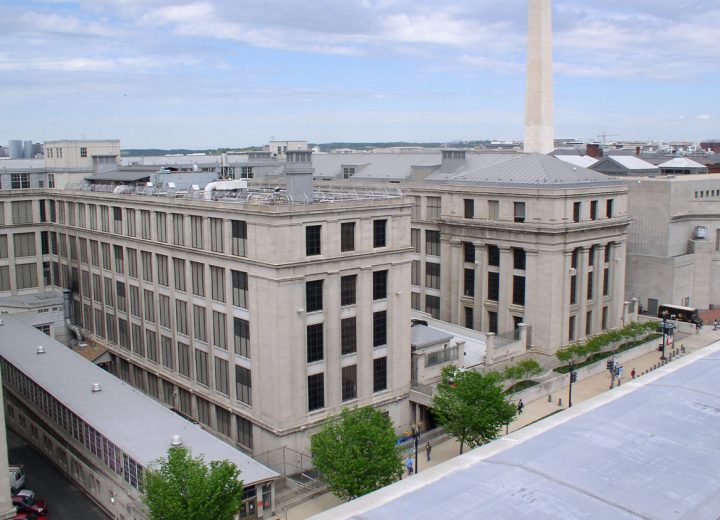U.S. Department of the Treasury
Bureau of Engraving & Printing
Facade Restoration
When, in 1911, the Bureau of Engraving and Printing (BEP), which is the largest producer of security documents, including paper currency, in the United States, had outgrown its second home at what is now the Auditor’s Complex, architect James Knox Taylor was commissioned to design a new, larger facility. Construction of the main building was completed in 1914, although this structure, too, proved too small, and an annex was built in 1936-38 across 14th Street.
In partnership with Wiley|Wilson, Hoffmann Architects + Engineers was asked to conduct an investigation for the preservation of the building’s exterior limestone facades. With the understanding that building maintenance is an ongoing process, BEP intended the evaluation to inform future preservation work and establish repair budgets.
The stone survey documented deterioration conditions and recommended a multi-year, phased program to limit annual repair costs. The project team also noted areas beyond the scope of the investigation that the BEP might consider as part of a comprehensive repair program.
Hoffmann provided drawing coordination and review, field verification, and documentation for the entire scope of recommended remedial work. During construction, our architects and engineers provided on-site construction administration services to see that work was completed as designed.
At the Annex, stone displacement and water intrusion had become problematic, and the BEP aimed to resolve these issues concurrent with the main building facade restoration. Based on field investigation and document review, Hoffmann determined that displaced stones posed a potential hazard. Working with Wiley|Wilson, our design professionals developed and coordinated emergency limestone panel repairs.
As part of the Department of the Treasury’s monumental building complex, the BEP buildings are national landmarks and critical production houses of the U.S. economy. As such, their restoration and upkeep are a point of national pride, not only preserving two architecturally significant buildings, but also maintaining a link with the country’s history.
